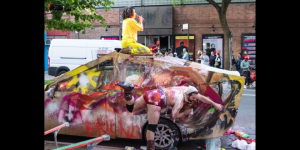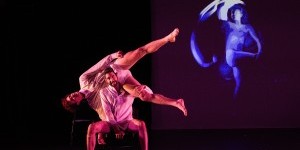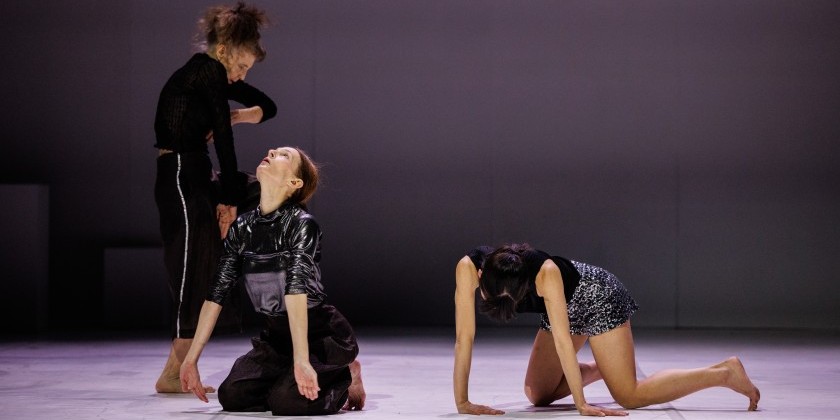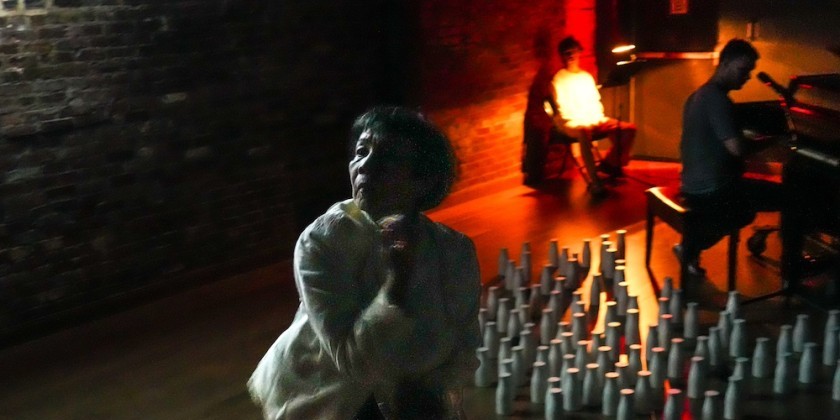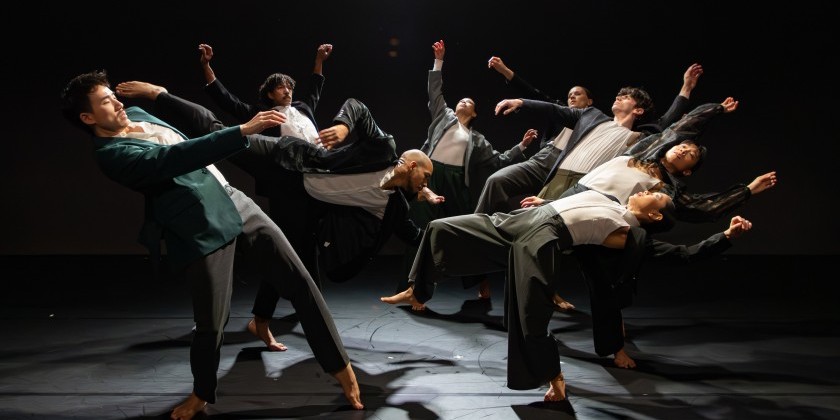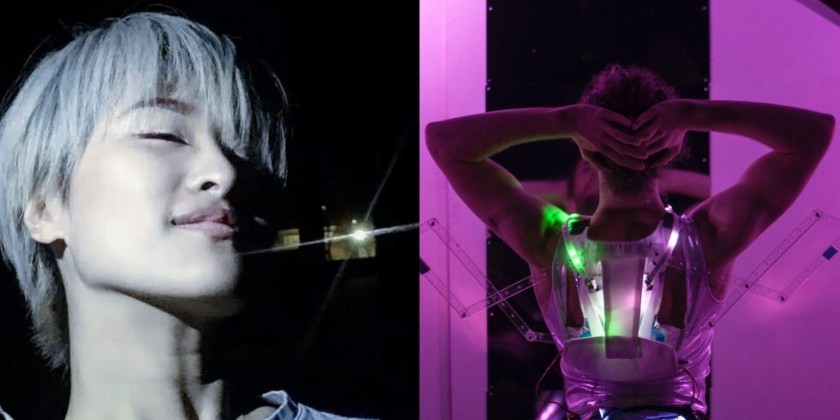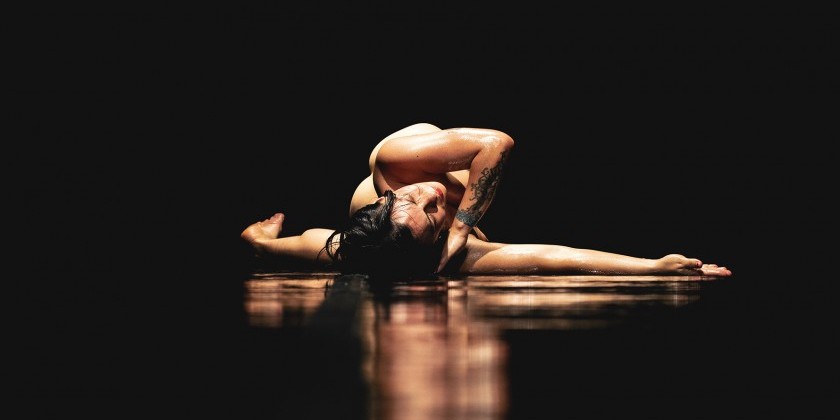IMPRESSIONS: La MaMa Moves! Dance Festival with Mia Habib, Colleen Thomas, and Gruppo Nanou
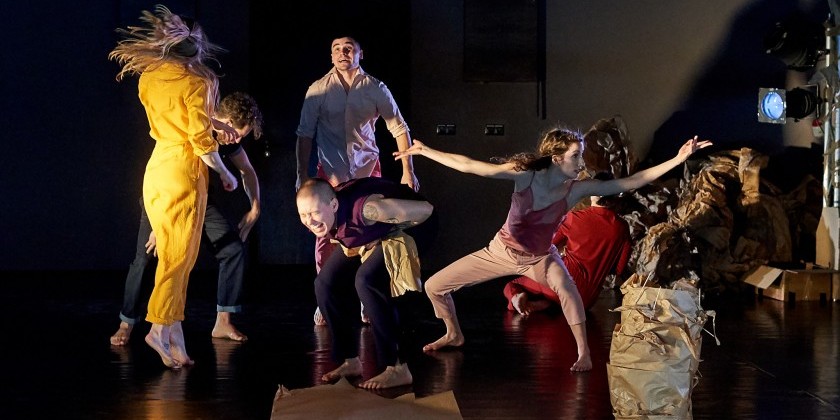
April 26–May 5
Curated by Nicky Paraiso
All – a physical poem of protest, choreography by Mia Habib
we want miles, in a silent way, choreography by Gruppo Nanou (Marco Valerio Amico & Rhuena Bracci)
but the sun came up and we were here, choreography by Colleen Thomas
The opening week of La MaMa Moves! Dance Festival featured works from Oslo-based Mia Habib, NYC-based Colleen Thomas, and the Italian company Gruppo Nanou. The first two investigate possibilities for community amid rising global tensions, while the third sorely mishandles the revolutionary compositions of jazz legend Miles Davis.
Habib’s All – a physical poem of protest presents a walk-on cast, pulled from a previous Movement Research workshop and/or three days of development at La MaMa. The performers, which include Habib, are nude. The movement score is comprised of walking, running, and stopping. The group circles the stage, and eddies form within as those closest to the center slow down while those on the outside speed up. Occasionally, the cast establishes a shoulder-to-shoulder ring around the stage’s perimeter as they wait for someone to restart the perambulatory pattern.
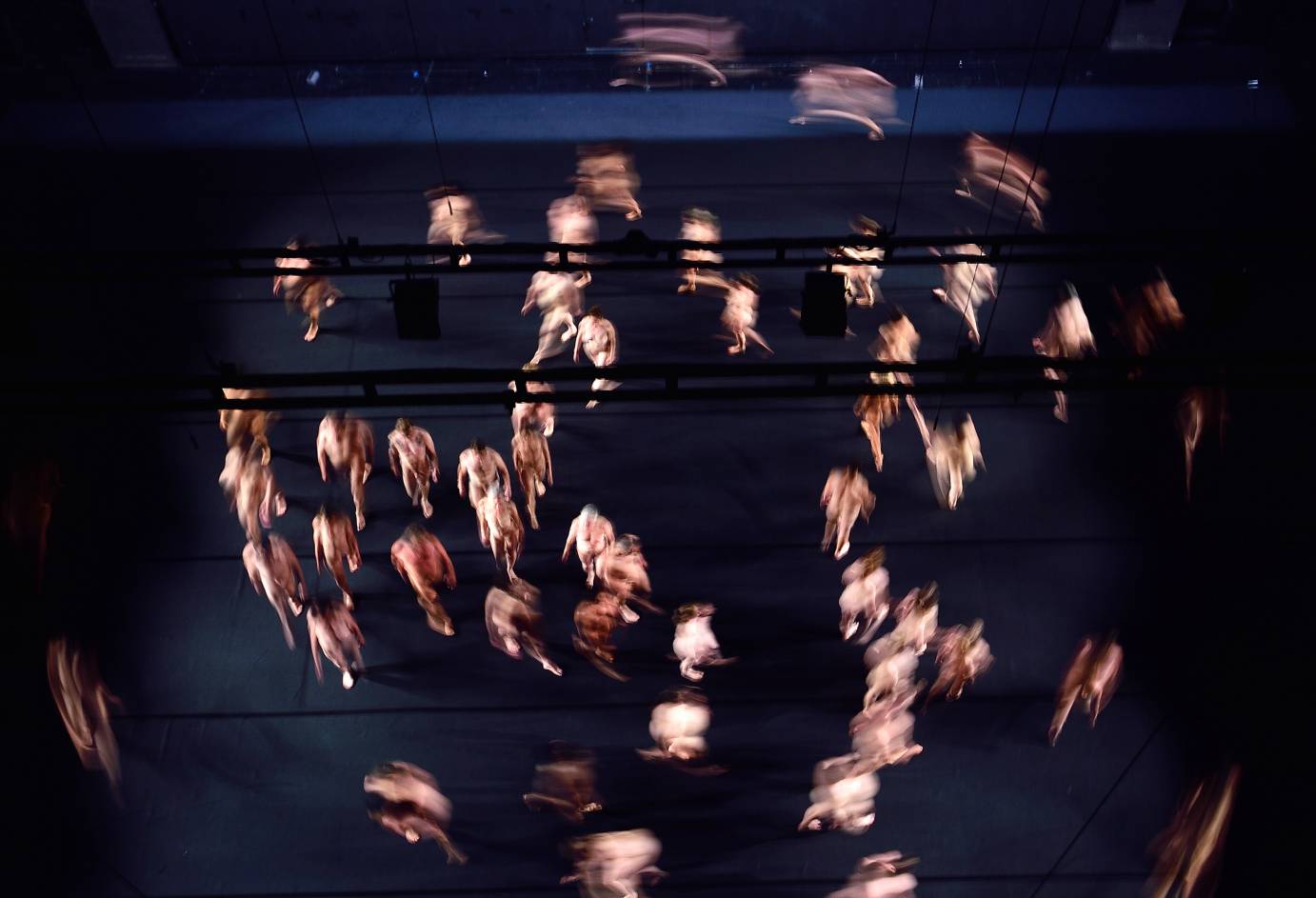
After growing accustomed to the running pattern, the eye searches for more subtle relationships among the performers. Unfortunately, their internal gaze cuts them off from one another, despite their physical proximity. Maybe the concentration required to run in such a tight space prevents them from seeing the whole room, or maybe their directive is to look straight ahead, but it's confusing to watch such a tight mass of vulnerable bodies and see little connection.
All – a physical poem of protest is meant to be embodied, non-literal poetics, so the camaraderie of a street demonstration might not be necessary. Still, embodying protest requires presence and purpose, and All’s emotional trajectory halts when the cast fails to move past an incidental relationship. The work merits a second viewing, ideally in a controversial or disruptive context (joyful or otherwise).
but the sun came up is equally enigmatic, but it deals in layers of color, texture, and objects, rather than simplicity. The work references Theater of the Absurd, trapping its performers in an incomprehensible world. Choreographer Thomas' capable performers make themselves caricatures, speaking in falsetto, contorting their faces, and telling stories that have no beginning or end. They also dance very well, diving in and out of the floor with ease.
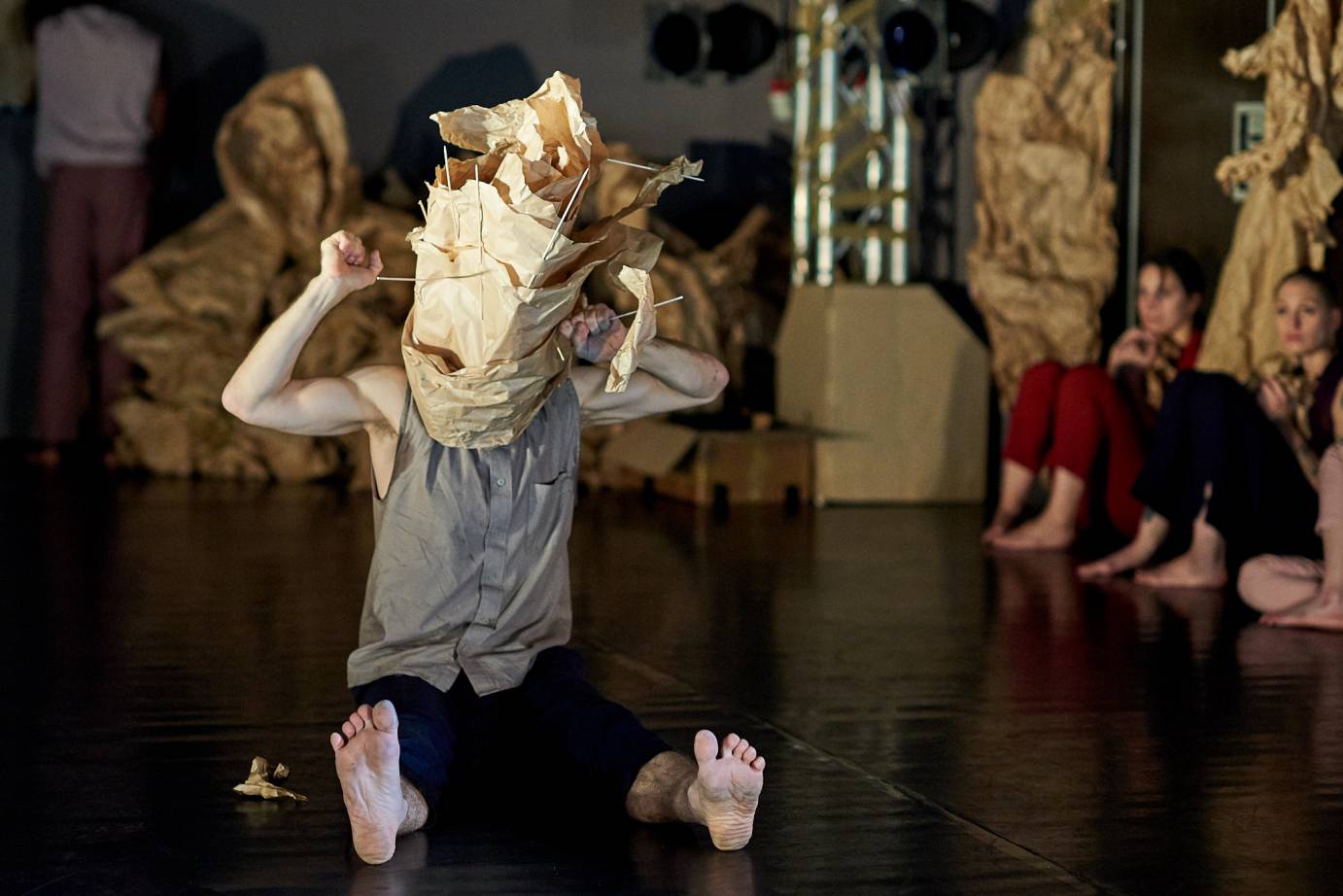
Ellen Stewart Theatre's upstage double doors open into a distant room, revealed only when they are flung open to haul a performer in or toss them out. Through the doors, the audience glimpses people in struggle, or celebration, though it's unclear whether anyone wants to be in there. Later, a performer stabs through the eyes of his mask, a fragile paper river divides the stage in half, and another dancer jerks his body like a marionette. Considering the antics taking place onstage, an endless party, or even an endless battle, might be preferable. At least those are predictable.
The characters find little common ground until the end when they lift a previously unnoticed sculpture to the ceiling. The sculpture doesn't look like anything in particular, just a crumpled mass of paper. Perhaps each character sees it as something different and values it for their own reasons. It's an uneasy truce held together by a common goal — an end to divisions without achieving unity.
If but the sun came up asks too many questions and All asks too few, the creators of we want miles, in a silent way didn't ask any. The work claims to investigate the “choreographic language” of Miles Davis' albums Birth of the Cool, Kind of Blue, and Bitches Brew by “silencing” Davis' voice within the music. That is, removing the trumpet from the compositions to find out what's left over.
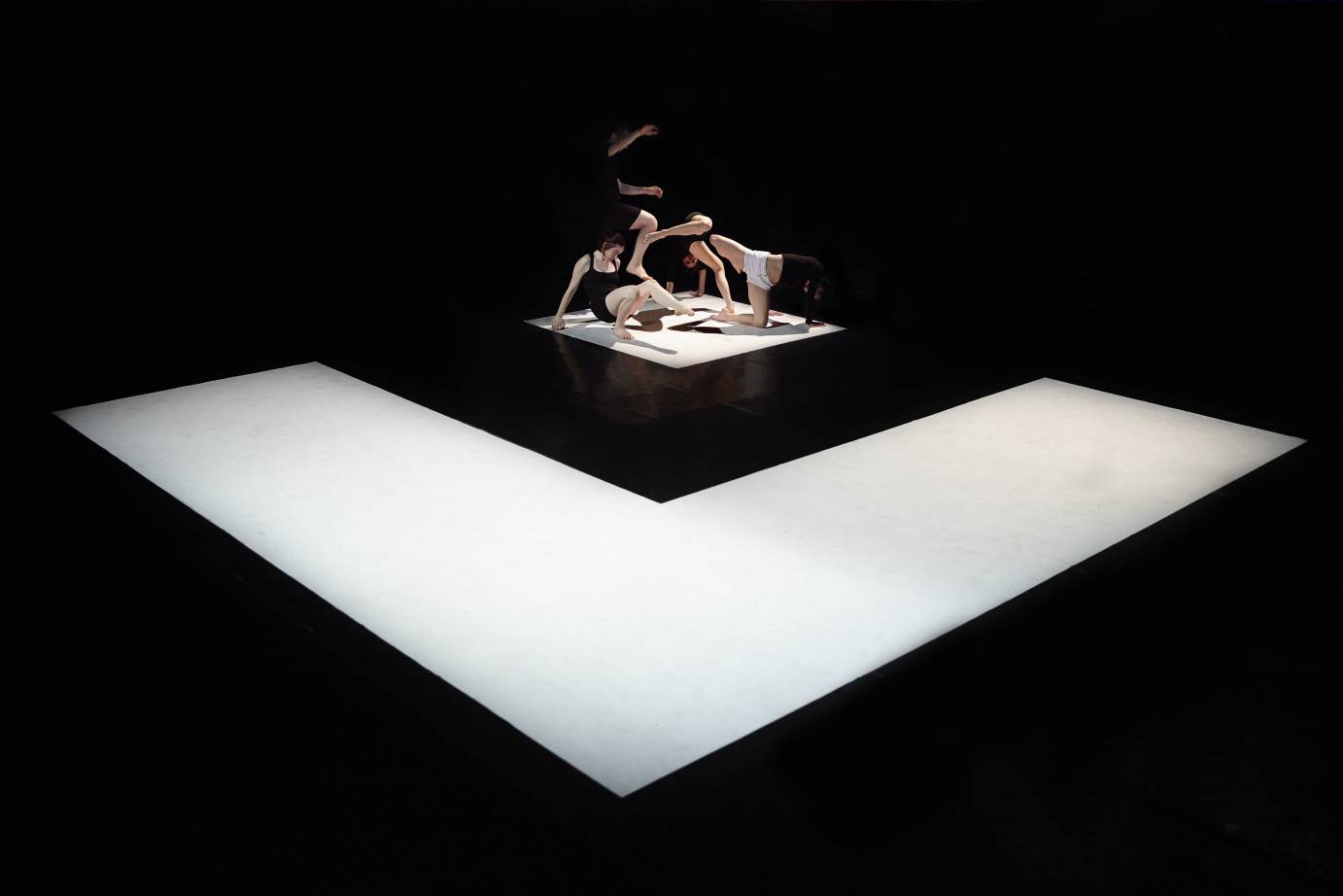
Davis’ language is an ensemble one. He played with artists who helped to define aspects of American jazz, and his approach was deliberately minimalist in order to support the other musical voices present. Gruppo Nanou's choreographic proposition reveals a deep ignorance of his music. We don't have to wonder what would happen if Davis' voice is silenced — we already know. Editing the music into artificial loops and splices and then searching for meaningful ensemble composition is akin to knocking down walls and then looking at the rubble to determine the size of the building.
The choreography and lighting design fail to rescue this work. Three women perform a nearly non-stop stream of linear, darting limbs, high kicks, and pirouettes. A male soloist occasionally walks or skitters across the stage. The lighting, which features beautiful, saturated colors, changes constantly, perhaps in reference to Davis' prismatic compositions. But it's impossible to pin down how exactly these random combinations of lights, sound, and movement relate to one another.
Gruppo Nanou's basic choreographic formula and simplistic sound editing is antithetical to the rich choice-making within Davis' ensemble improvisations and compositions. If the company wants to silence his voice, they should at least demonstrate they understand what he was trying to say.




